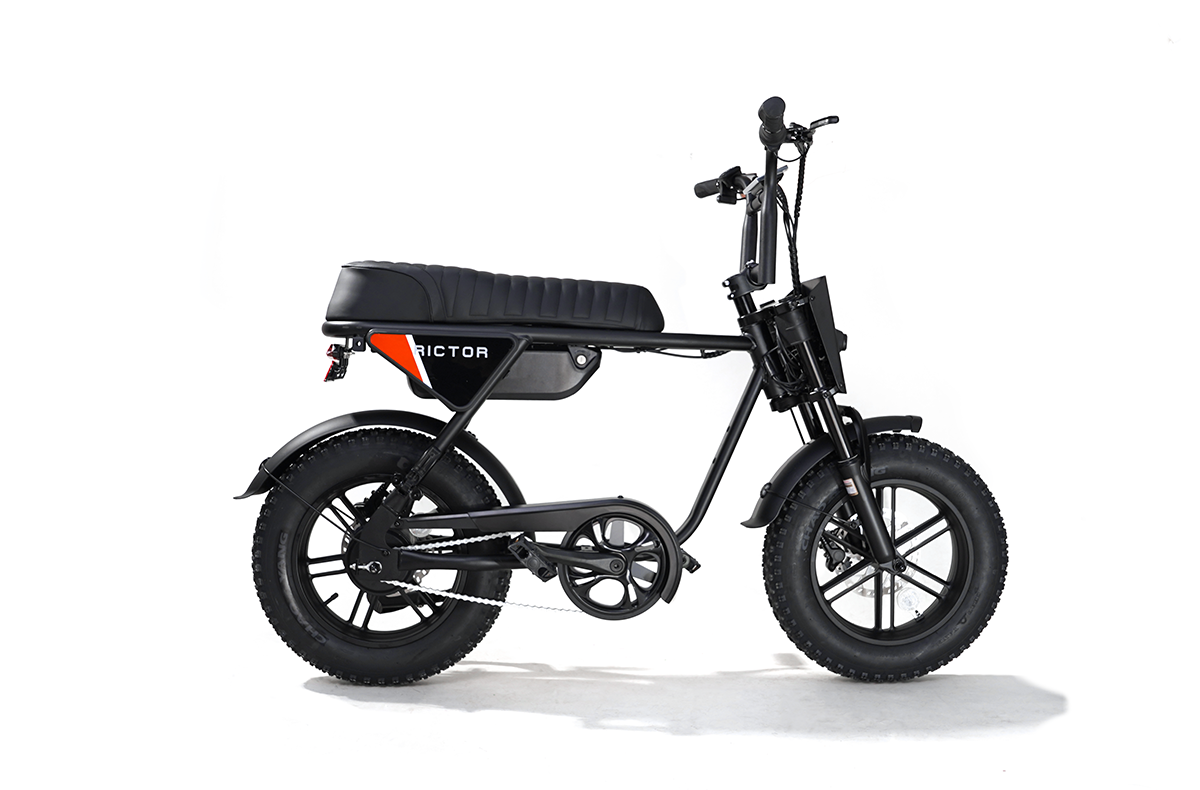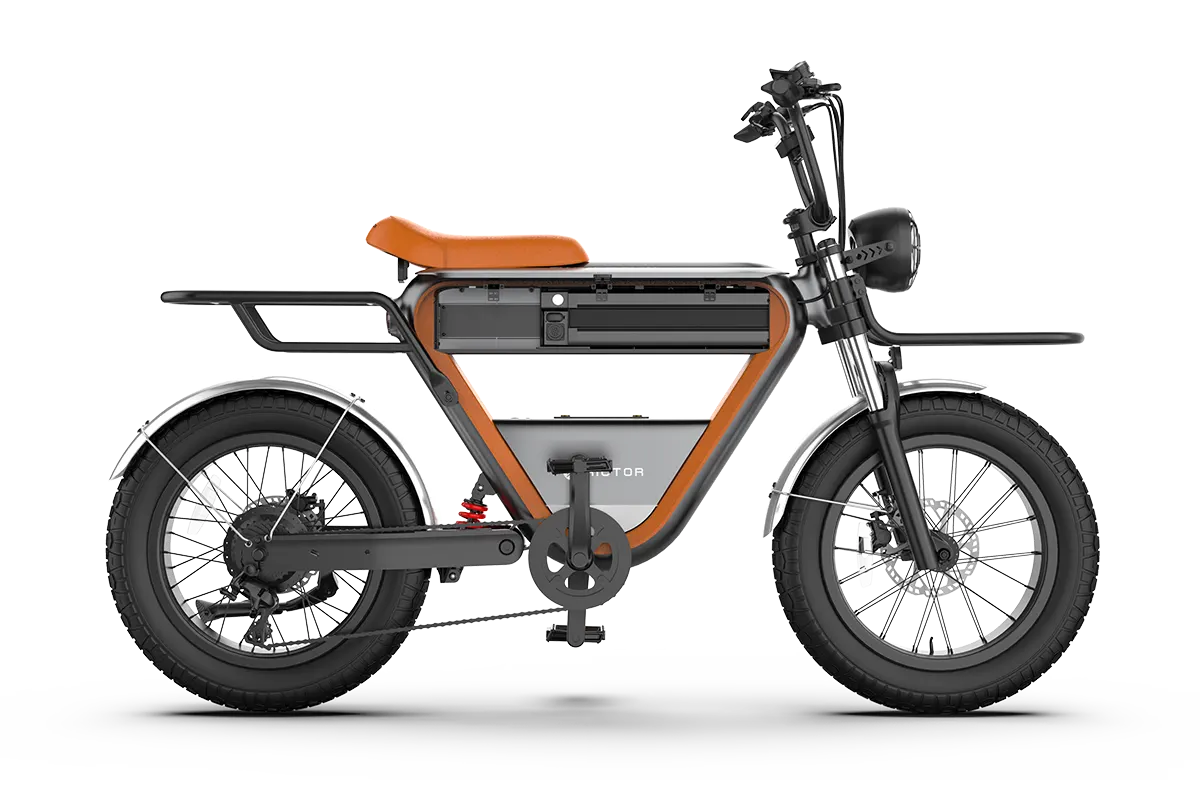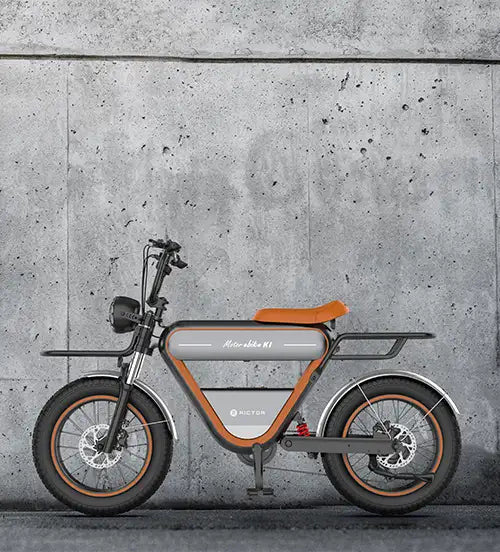
What is Good Wattage for Electric Bike?
Wattage refers to the power output of the electric bike's motor, and it directly affects your riding experience in terms of speed, acceleration, and range.
But what exactly is a good wattage for an electric bicycle?
This comprehensive guide will dive deep into how wattage influences performance and what wattage suits different riding needs.
How Wattage Affects Performance
The wattage of bike’s motor plays a pivotal role in determining its overall performance.
In simple terms, wattage is a measure of the motor’s power output.
A higher wattage typically means the motor can generate more power, allowing the bike to handle more challenging conditions such as steep hills or heavy loads with ease.
More watts translate to more torque, which is essential for accelerating quickly and maintaining a higher cruising speed.
A high wattage doesn’t automatically mean better performance in every aspect.
While a 750W motor might make your bike more powerful, it could also increase the drain on your battery, resulting in a shorter overall range.
In contrast, a 250W motor may be less powerful but more energy-efficient, offering longer rides on a single charge.
The higher the wattage, the faster the bike can accelerate, and the higher its top speed is likely to be.
Electric bikes with higher wattage motors, such as 500W or 750W, can typically reach speeds of 28 mph (45 km/h) or higher.
Lower wattage motors, such as 250W, are often designed to adhere to speed limits in regions where e-bikes are legally restricted to speeds of 15 to 20 mph (25 to 32 km/h).
If you're commuting in urban areas where speed regulations apply, a 250W motor may be sufficient and safer.
Generally, higher wattage motors consume more energy, which reduces the distance you can travel on a single charge.
For instance, a 750W motor can offer powerful assistance, but it will deplete your battery faster compared to a 250W motor.
If you're looking for bike with an extended range, especially for long commutes or recreational rides, you may want to consider a motor with lower wattage, or ensure your electric bicycle is equipped with a larger-capacity battery.
The balance between power and range is crucial.
While a 250W e-bike motor may deliver a longer range, a 500W or 750W motor will provide more power for climbing hills or carrying heavy loads, but with potentially reduced range unless paired with a high-capacity battery.
SEE ALSO Are e-bikes waterproof? the truth might surprise you!we still have owesome recommendation

Best Wattage for Different Riding Needs
For most commuting purposes, a 250W to 500W motor is ideal.
250W motor is often sufficient for flat urban areas.
It provides enough power to reach speeds of 15 to 20 mph while conserving battery life, which is crucial for longer daily commutes.
If your route involves more varied terrain or if you prefer a bit more speed, a 500W motor might be a better choice.
It offers improved acceleration and can handle hills or headwinds more efficiently than a 250W motor, making it ideal for commuters dealing with more challenging road conditions.
For heavier riders, wattage becomes a critical factor in ensuring a smooth and efficient ride.
A higher wattage motor, typically 500W or 750W, is recommended for riders who weigh more or who frequently carry heavy loads, such as groceries or backpacks.

A motor with more wattage will generate more torque, making it easier to start from a standstill and maintain speed even with added weight.
A 250W motor may struggle to provide the necessary power for heavier riders, especially when climbing hills or accelerating quickly.
In contrast, 500W or 750W motor can offer a more comfortable and stable riding experience, ensuring the motor doesn’t strain under load.
If you primarily ride on flat, paved roads, a 250W motor will suffice. It's energy-efficient, lighter in weight, and provides a smooth ride in areas where inclines are minimal.
For more challenging terrain, such as hilly or mountainous regions, a 500W or 750W motor is highly recommended.
The added power will help the bike climb hills more effortlessly and handle off-road conditions like dirt or gravel paths.
A higher wattage motor will provide the necessary torque and speed to navigate steep slopes with ease.
Higher wattage motor is undoubtedly better for uphill riding.
When climbing hills, the motor requires more power to overcome the resistance of the incline.
A 750W motor offers superior hill-climbing capabilities compared to a 250W motor, which may struggle on steeper gradients. Check this vintage electric bike Rictor K1!
Riders who frequently encounter hilly terrains should opt for an electric bicycle with a 500W to 750W motor to ensure a smoother and more enjoyable ride.

250W VS 500W VS 750W E-Bike Motors
250W Motors
These are typically the most energy-efficient and are suitable for urban commuting or recreational rides on flat terrain.
They offer a good balance between power and range, but may not be sufficient for heavy riders or those tackling steep hills.
500W Motors
Considered the sweet spot for many riders, 500W motors offer a solid combination of power and efficiency.
They are capable of handling a variety of terrains, including moderate hills, and are a great choice for commuters or recreational riders who want a bit more power without sacrificing too much battery life.
750W Motors
These are the most powerful of the three and are perfect for riders who need to handle steep hills or rough terrain.
However, the increased power comes at the expense of battery range.
A 750W motor will drain the battery faster, so it’s ideal for riders who prioritize power over long-distance riding or for those with larger-capacity batteries.

Can You Upgrade the Wattage of Electric Bike Motor
In general, upgrading the wattage of your e-bike motor is not a simple task and often requires a complete motor replacement.
The motor, battery, and controller are designed to work together, and increasing the wattage may overload the other components.
Additionally, legal regulations in many regions limit e-bike wattage, so upgrading to a higher wattage motor may make your ebike non-compliant with local laws.
That being said, some electric bike manufacturers offer aftermarket upgrades or kits that can increase your bike's power output.
It’s essential to check with the manufacturer to ensure any upgrades are compatible with your bike's frame, battery, and controller system.
Keep in mind that upgrading to a higher wattage may also require a larger battery, as more powerful motors demand more energy.
FAQs
How does wattage affect the range of an e-bike?
Higher wattage motors, like 500W or 750W, typically consume more energy, which can reduce the range of your e-bike on a single charge. Lower wattage motors, such as 250W, tend to offer longer ranges due to their more energy-efficient operation.
What is the best wattage for commuting on an e-bike?
For commuting, a 250W to 500W motor is ideal. A 250W motor is great for flat terrain and short distances, while a 500W motor provides extra power for longer commutes or routes with hills.
Can heavier riders benefit from higher wattage e-bike motors?
Yes, heavier riders often benefit from higher wattage motors, such as 500W or 750W, as these motors provide more power, making it easier to accelerate, climb hills, and maintain speed under heavier loads.




